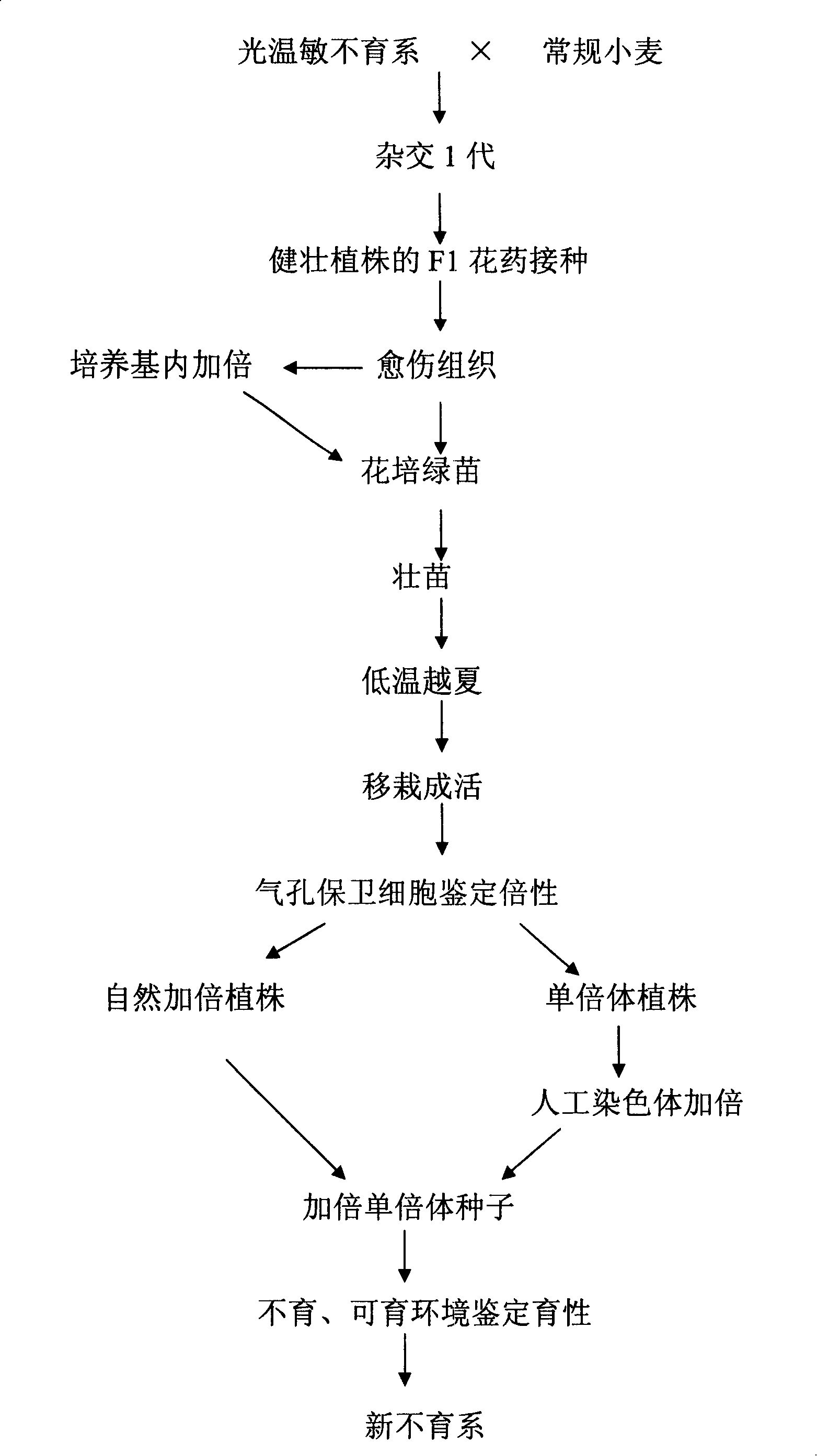Method of using anther culture rapidly selecting wheat photo-thermoperiod sensitive genic male sterile lines
A photo-thermosensitive sterile line, wheat technology, applied in horticultural methods, botanical equipment and methods, applications, etc., can solve the problems of difficult operation, long breeding cycle, etc., to reduce the difficulty of selection, increase the quantity, and improve the green The effect of seedling induction rate
- Summary
- Abstract
- Description
- Claims
- Application Information
AI Technical Summary
Problems solved by technology
Method used
Image
Examples
Embodiment 1
[0030] (1) Configure a hybrid combination: in the first year, the photothermosensitive genic male sterile line BS20 was used as the female parent, and the conventional variety Jimai 36 with a dwarf and multiple panicle type was used as the male parent to form a hybrid combination to obtain F1 generation seeds.
[0031] (2) Planting of F1 generation hybrids: in the same year, it was sown on October 5 in the Beijing area, with a sowing density of 300,000-450,000 / ha.
[0032] (3) Anther inoculation: in the spring of the second year, when the F1 generation develops to the middle and late stage of mononucleus pollen grains (the booting ear is at the 1 / 3 and 1 / 2 of the flag leaf and the inverted second leaf at this time), take 30 main For the stem or tiller, the leaf sheaths were peeled off on a sterile workbench, and the anthers of 10 spikelets in the middle and lower parts were taken and inoculated on W14 medium to induce callus, and a total of 1120 anthers were inoculated.
[0033]...
Embodiment 2
[0040] The photothermosensitive genic male sterile line BS20 was used as the female parent, and the conventional variety Nongda 3338 with dwarf and multiple spikes was used as the male parent to prepare a hybrid combination. The artificial chromosome doubling of flower-cultured green seedlings is to directly process the callus on the doubling medium, and then transfer it to the differentiation medium for normal culture. All the other steps are the same as in Example 1.
Embodiment 3
[0042] The photothermosensitive genic male sterile line BS10 was used as the female parent, and the early-maturing, medium-dwarf conventional variety Jinan 16 was used as the male parent to prepare a hybrid combination. The diploid plants can be directly obtained through natural doubling of flower-cultivated green seedlings. All the other steps are the same as in Example 1.
PUM
 Login to View More
Login to View More Abstract
Description
Claims
Application Information
 Login to View More
Login to View More - R&D
- Intellectual Property
- Life Sciences
- Materials
- Tech Scout
- Unparalleled Data Quality
- Higher Quality Content
- 60% Fewer Hallucinations
Browse by: Latest US Patents, China's latest patents, Technical Efficacy Thesaurus, Application Domain, Technology Topic, Popular Technical Reports.
© 2025 PatSnap. All rights reserved.Legal|Privacy policy|Modern Slavery Act Transparency Statement|Sitemap|About US| Contact US: help@patsnap.com

